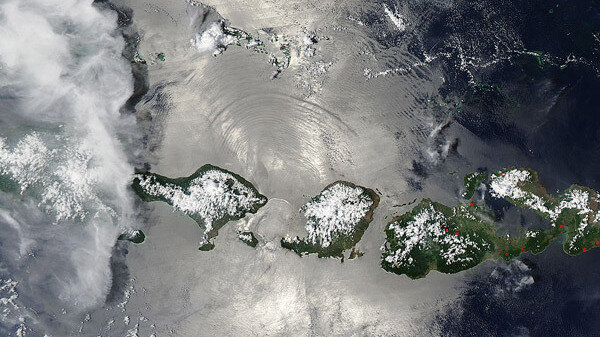- Feb 5, 2002
- 166,315
- 56,041
- Country
- United States
- Faith
- Catholic
- Marital Status
- Married
- Politics
- US-Others

An image taken by NASA's Aqua satellite as it passes over Indonesia, captures evidence of an internal wave in the same general area where the KRI Nanggala submarine disappeared earlier this month.
No official cause has yet been established for the destruction of an Indonesian submarine with 53 people aboard earlier this month, but some speculation has zeroed in on an undersea phenomenon which has been noted by submariners since at least World War II, though it has become better understood only in recent decades.
A senior Indonesian navy official suggested earlier this week that an "internal wave" may have pushed the KRI Nanggala 402 below its crush depth, causing the loss of the vessel and all aboard. He cited satellite images showing the presence of such a wave in the area at about the time the sub disappeared.
Such waves — while seldom noticed by observers on the surface — can reach dizzying undersea heights and therefore cause concern for submarines, scientists say. They are generated by the interplay of strong tides, warmer and cooler ocean layers and the undersea geography.
Internal waves occur in specific ocean regions around the world – places such as the Strait of Gibraltar that links the Mediterranean with the Atlantic Ocean, parts of the Western Pacific and the South China Sea. They are also known to exist in the Lombok Strait area in Indonesia, where the Nanggala was lost.
Continued below.
What Is An 'Internal Wave'? It Might Explain The Loss Of An Indonesian Submarine
